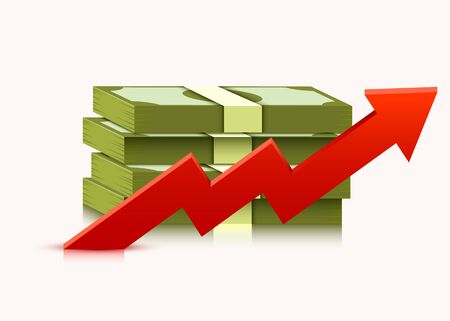1. Introduction: The Link Between Precious Metals and Geopolitics
Precious metals like gold, silver, platinum, and palladium have long been regarded as safe-haven assets. When global uncertainties arise, investors often turn to these metals as a way to protect their wealth. But why do geopolitical events have such a strong impact on the prices of these commodities?
Understanding the Connection Between Geopolitics and Precious Metals
Geopolitical instability creates market uncertainty, which in turn drives demand for precious metals. Several key factors contribute to this relationship:
(1) Flight to Safety
During times of war, political tensions, or economic crises, investors tend to move their money away from volatile assets like stocks and into more stable investments like gold and silver.
(2) Currency Fluctuations
Global conflicts and economic instability can weaken major currencies, leading to increased demand for precious metals as an alternative store of value.
(3) Supply Chain Disruptions
Certain regions play a crucial role in mining and refining precious metals. Any disruption—whether due to sanctions, wars, or trade restrictions—can lead to supply shortages and drive up prices.
Historical Examples of Geopolitical Influence on Precious Metal Prices
The relationship between global events and precious metal prices is well-documented. Here are some notable examples:
| Geopolitical Event | Impact on Precious Metals |
|---|---|
| 2008 Financial Crisis | Gold prices surged as investors sought safe-haven assets. |
| 2014 Russia-Ukraine Conflict | Palladium prices increased due to concerns over Russian supply disruptions. |
| 2020 COVID-19 Pandemic | A spike in gold prices occurred due to economic uncertainty and central bank stimulus measures. |
2. Historical Trends: Precious Metals as a Safe Haven
Examining Past Geopolitical Crises and Their Impact
Throughout history, geopolitical crises have consistently influenced the demand and price of precious metals. Investors often turn to gold, silver, and other metals as a hedge against uncertainty. Lets take a look at key historical events and their effects on precious metal prices.
(1) The 1979 Iranian Revolution
The Iranian Revolution led to significant instability in the Middle East, causing global oil prices to soar. This uncertainty drove investors toward gold as a safe haven asset.
| Year | Gold Price per Ounce (USD) |
|---|---|
| 1978 | $185 |
| 1980 | $850 |
(2) The 2008 Global Financial Crisis
The financial crisis caused widespread panic in global markets. Investors sought stability in gold, leading to a sharp increase in its price.
| Year | Gold Price per Ounce (USD) |
|---|---|
| 2007 | $650 |
| 2011 | $1,900 |
(3) Russia-Ukraine Conflict (2014 & 2022)
Tensions between Russia and Ukraine in both 2014 and 2022 resulted in market volatility. Each time, precious metal prices surged as investors looked for security.
| Year | Gold Price per Ounce (USD) |
|---|---|
| 2013 | $1,200 |
| 2014 | $1,350 |
| 2021 | $1,800 |
| 2022 | $2,050 |
The Consistent Role of Precious Metals in Uncertain Times
No matter the era or crisis, precious metals have historically served as a reliable store of value during times of economic and political turmoil. Whether due to war, financial collapse, or geopolitical tensions, investors continue to rely on these assets for protection.

3. Current Global Events Shaping the Market
Precious metal prices are highly sensitive to global events, especially geopolitical tensions, conflicts, and economic policies. Investors closely watch these developments as they often dictate market trends. Below, we analyze some of the key global factors currently influencing gold, silver, and other precious metals.
Ongoing Geopolitical Tensions
Geopolitical instability has historically driven investors toward safe-haven assets like gold and silver. Here are some major geopolitical concerns affecting the market:
(1) Russia-Ukraine Conflict
The ongoing war between Russia and Ukraine continues to disrupt global markets. Sanctions on Russia have impacted energy supplies, leading to inflationary pressures that make precious metals more attractive.
(2) U.S.-China Relations
Tensions between the U.S. and China over trade policies, technology restrictions, and Taiwan have created uncertainty in global markets. This has led investors to increase holdings in gold as a hedge against potential economic disruptions.
(3) Middle East Instability
Escalating conflicts in the Middle East, including tensions involving Iran and Israel, contribute to price volatility in oil and commodities, further increasing demand for precious metals.
Economic Policies Driving Precious Metal Prices
The policies set by central banks and governments play a crucial role in determining the direction of precious metal prices. Some key factors include:
(1) Interest Rate Decisions
The Federal Reserves stance on interest rates significantly impacts gold prices. Higher interest rates typically reduce gold’s appeal since it does not yield interest, while lower rates make it a more attractive investment.
(2) Inflation Concerns
With rising inflation worldwide, investors seek assets that can preserve value. Historically, gold has served as a hedge against inflation, driving demand upward.
(3) Central Bank Gold Reserves
Many central banks continue to increase their gold reserves as a means of diversifying their holdings. This trend supports long-term demand for the metal.
Market Reactions to Recent Events
The table below summarizes how different geopolitical and economic events have influenced precious metal prices recently:
| Event | Impact on Precious Metals |
|---|---|
| Russia-Ukraine Conflict | Gold prices surged due to increased uncertainty and inflation concerns. |
| U.S.-China Trade Tensions | Silver demand rose as industrial uncertainty increased. |
| Federal Reserve Rate Hikes | A temporary dip in gold prices occurred due to higher yields on bonds. |
| Rising Inflation Rates | Bullish momentum for gold as investors seek protection against inflation. |
| Middle East Conflicts | A spike in safe-haven buying led to higher gold and silver prices. |
The relationship between global events and precious metal markets remains strong. As uncertainties persist, investors will likely continue turning to gold, silver, and other metals as protective assets.
4. Investor Strategies: Managing Risk in Uncertain Times
During times of geopolitical uncertainty, investors often seek safe-haven assets to protect their portfolios from volatility. Precious metals like gold and silver have historically been used as a hedge against market instability, inflation, and currency devaluation. Incorporating these assets into a diversified portfolio can help mitigate risk and provide financial security.
How Precious Metals Help in Risk Management
Investors turn to precious metals because they tend to retain value during economic downturns. Here are some key benefits:
- Inflation Hedge: Gold and silver typically maintain purchasing power when inflation rises.
- Safe-Haven Asset: During geopolitical crises, investors flock to precious metals, driving up prices.
- Diversification: Precious metals often move inversely to stocks, providing balance in a portfolio.
Ways to Invest in Precious Metals
There are several ways to add precious metals to your investment strategy. Each option has its advantages and risks:
| Investment Type | Description | Pros | Cons |
|---|---|---|---|
| Physical Metals (Gold/Silver Bars & Coins) | Tangible assets held by the investor. | – No counterparty risk – Can be stored securely |
– Requires storage space – Liquidity concerns |
| Precious Metal ETFs | Exchange-traded funds that track metal prices. | – Easy to trade – No need for physical storage |
– Potential management fees – No direct ownership |
| Mining Stocks | Shares of companies engaged in metal mining. | – Potential for dividends – Can outperform metal prices |
– Market volatility – Company-specific risks |
| Futures & Options | Contracts for buying/selling metals at future dates. | – High potential gains – Leverage available |
– High risk – Requires expertise |
Diversifying with Precious Metals
A well-balanced portfolio should include a mix of assets, including stocks, bonds, and alternative investments like precious metals. Here’s an example of how different asset classes can work together:
| Asset Class | % Allocation (Example) |
|---|---|
| Stocks (Equities) | 50% |
| Bonds (Fixed Income) | 30% |
| Precious Metals (Gold, Silver, etc.) | 10% |
| Other Alternative Investments (Real Estate, Crypto, etc.) | 10% |
Tactical Considerations When Investing in Precious Metals
(1) Monitoring Market Trends
The prices of gold and silver fluctuate based on factors such as central bank policies, inflation reports, and geopolitical developments. Staying informed about these trends can help investors make timely decisions.
(2) Adjusting Allocations Based on Economic Conditions
If inflation is rising or geopolitical tensions escalate, increasing exposure to precious metals may be a prudent strategy. Conversely, when markets stabilize, reallocating some holdings into growth assets might enhance returns.
(3) Balancing Short-Term vs. Long-Term Holdings
A mix of short-term trading opportunities and long-term holdings allows investors to benefit from price fluctuations while maintaining a core position for stability.
Diversifying with precious metals can provide protection against uncertainty while ensuring a balanced investment approach. By understanding different investment options and adjusting allocations strategically, investors can safeguard their wealth in volatile times.
5. Future Outlook: What to Expect in the Coming Years
The relationship between precious metals and geopolitical uncertainty is expected to remain strong in the coming years. As global tensions, economic policies, and inflation concerns continue to evolve, investors will closely watch how these factors influence gold, silver, platinum, and other metals.
Key Geopolitical Factors That May Impact Precious Metals
Several geopolitical trends could significantly affect the precious metals market in both the near and long term:
(1) Rising Global Tensions
Conflicts between major economies, territorial disputes, and international sanctions can create instability that drives investors toward safe-haven assets like gold and silver.
(2) Inflation and Monetary Policy
Central banks worldwide are adjusting their monetary policies to control inflation. If inflation remains high, demand for precious metals as a hedge may increase.
(3) Supply Chain Disruptions
Mining operations and metal exports can be affected by political instability in key producing nations. Any disruption in supply could lead to price fluctuations.
Short-Term vs. Long-Term Predictions
| Timeframe | Predicted Impact on Precious Metals |
|---|---|
| Short-Term (1-2 years) | – Increased volatility due to geopolitical conflicts – Strong demand for gold during uncertain economic periods – Potential price spikes if inflation remains high |
| Long-Term (5+ years) | – Continued demand as central banks diversify reserves – Potential growth in industrial use for silver and platinum – Supply constraints may drive prices higher |
How Investors Can Prepare
To navigate potential market fluctuations, investors may consider:
(1) Diversification Strategies
A balanced portfolio with a mix of precious metals, equities, and bonds can help mitigate risks from sudden geopolitical events.
(2) Monitoring Economic Indicators
Tracking inflation rates, interest rate decisions, and global trade policies can provide insights into potential price movements.
(3) Staying Updated on Geopolitical Developments
Keen awareness of global events will help investors make informed decisions regarding their holdings in precious metals.

